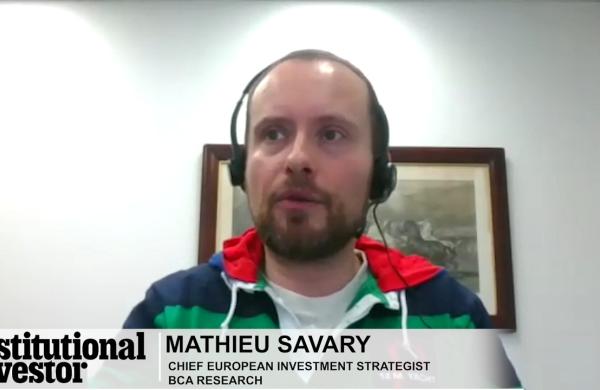The U.S. equities industry was supposed to lead the global effort to adopt a one-day trade settlement cycle, known as T+1. American brokerages and money managers had the financial wherewithal to make the huge investments required to automate their back offices. And they stood to realize the biggest gains, because even small increases in trading efficiency produce huge savings in such a large capital market. European firms were expected to follow the U.S. lead, with those in Asian markets falling into line shortly thereafter.
Or so went the theory.
The American securities industry shelved T+1 in 2002 because of high costs and lack of interest. U.S. and European attention has instead shifted to straight-through processing -- a more loosely coordinated campaign to streamline the many steps leading up to settlement of a transaction. This less-formalized initiative, it's hoped, will deliver many of the same efficiencies and help the industry cope with the growing volume of cross-border transactions.
So what happened to the pan-Asian members of the global automation movement? Little input was ever sought from Australian, Japanese or Singaporean firms or bourses when T+1, and later STP, were promulgated. But by a number of key measures, several of these markets are arguably ahead of the efforts to their west. Australia, for instance, has gone beyond T+1: Many institutions there are ready for T+0.
A recent study by Omgeo, the Boston-based posttrade-processing company co-owned by Depository Trust and Clearing Corp. and Thomson Financial, found "high STP readiness" in a number of Asian markets. According to the report, Hong Kong "stands out from the rest of the region in terms of fixed-income trade automation." Singapore's market affirms, or prepares for settlement, 80 percent of securities transactions on the same day that they are initiated. That equals the performance of operations in the U.S. that use Omgeo's central trade-matching facility, though same-day affirmations in the U.S. overall are only 20 percent.
But Australia truly stands out. Just 1 percent of the country's investment management firms' transactions are characterized as exceptions, meaning that they need a manual fix. Fewer than 1 percent of the trades fail to settle. (That compares with the U.S. trade-failure rate of 1 percent, but the global average on cross-border trades is about 25 percent.) So automated are Australian money managers that they assign an average of only 1.9 back-office employees to trade processing; that compares with 6.2 for all companies surveyed by Omgeo and eight for nonautomated shops.
People familiar with the Australian financial industry aren't surprised. "It has always been very advanced in terms of introducing new instruments," says Till Guldimann, vice chairman of Wayne, Pennsylvaniabased SunGard Data Systems and a longtime observer of the securities services industry.
Omgeo president and CEO Adam Bryan, an Australian native, points out that his home country has "an advanced industrial economy, the population is smaller than California's, and labor is at a premium," which leads manufacturing and services companies alike to push the automation envelope. High back-office costs prompted a coordinated modernization of the Australian securities industry more than a decade ago.
"STP and real-time processing have existed in Australia for ten years," says Joakim Sundell, finance director of GBST Holdings, a supplier of trading and clearing systems to a majority of the country's 80 broker-dealers. "We work with a lot of U.S. firms that were always talking about T+1," adds Sundell. "Australia has been T+0-capable for ten years."
The key word is "capable." Australian stocks still clear on a T+3 schedule, just as U.S. equities do, because some asset managers and custodians haven't kept pace with the brokerages, notes SunGard's Guldimann. Yet most observers believe that Australia could get to T+1, or even T+0, much more easily than the U.S. because of the substantial investments made in the 1990s.
To be sure, Australia's smaller financial markets don't present the same challenges that those of the U.S. or Europe do. Total managed assets in Australian investment funds (an industry dominated by five firms: AMP Group, BT Financial Group, Colonial First State Investments group, Macquarie Bank Group Managed Funds and MLC) were A$624.2 billion ($375.3 billion) as of March 2003, according to the Australian Bureau of Statistics. That's about $400 billion less than one U.S. giant, Fidelity Investments, manages.
And of an estimated 191,000 monthly trades initiated by Australian investment managers, an unusually high portion, 91 percent, are domestic, according to the Omgeo study. The Asia-Pacific average is 57 percent domestic. Some European countries are majority cross-border: France, 60 percent; U.K., 65 percent; and Italy, 70 percent. An insular market like Australia's can implement STP more easily than can higher-volume, more heterogeneous markets.
Chris Hamilton, executive general manager and head of the clearing and settlement division of the Australian Stock Exchange, says that the efficiencies didn't happen overnight. He points out that the Sydney-based ASX was formed in 1987 when six state stock exchanges were merged, and it demutualized in 1998. Fully electronic trading and back-office automation were goals from the start. Says Hamilton, "We talk about economies of scope -- that is, setting up systems to deliver efficiency from end to end in the trading process."
The exchange does its part through Seats (stock exchange automated trading system), its principal platform for equities, and Chess (clearing house electronic subregister system), the central hub for both money and share transfers. "Both systems work together seamlessly with the front and back offices of broker-dealers," says Hamilton. "Australia is highly automated, by global standards."
In fact, it's been highly automated for so long that the systems may need some sprucing up. Some software developers, for example, have complained about difficulties in building interfaces to Chess. Hamilton sympathizes. "When Chess was designed in 1992'93, we decided to develop our own messaging interface, which has proved difficult to change," he explains. Now he has an opportunity to upgrade to ISO 15022, the messaging standard that the Society for Worldwide Interbank Financial Telecommunication implemented on its network two years ago.
"I would like to move to the 15022 standard, but not all participants in the Australian market use Swift," admits Hamilton, "and there are also a large number using the current interface. I have to reconcile these factors with the benefits of moving to 15022."
Hamilton says competition among brokerages and custodians has also brought more efficiency. One third to one half of the funds invested in the market come from overseas, which means the firms servicing those assets must meet the exacting requirements of international investors buying into Australia. Invest Australia, a government agency, has been aggressively promoting the country as a strategically located, tax-advantaged operating center for global financial firms; Fidelity, Schroder Investment Management and State Street Corp. are just a few firms that have brought in considerable back-office expertise.
"Because Australia has a stable, mature and highly automated central infrastructure, participants have the time and incentive to build their own systems to work efficiently in a highly integrated STP environment," Hamilton says.
Australian STP rates also benefit from high-quality communications links between the buy side and sell side, says Hamilton. The ASX owns 15 percent of Iress Market Technology, the leading provider of these interfaces and a competitor of GBST. The latter's equities- trading and back-office system, with multimarket and multicurrency trading capabilities, processes roughly half of all trades on the Australian and New Zealand stock exchanges.
GBST is now challenging Iress in the retail brokerage market, through an alliance with Molten Financial Solutions. Molten's Siren market data solution has been integrated with GBST's applications to enable seamless processing of ASX trades, thus supporting STP. "Market data is one of the highest costs to a broker," says GBST chief executive Stephen Lake.
SunGard's Guldimann says the real test for Australia will come as it links more closely with nearby markets that already handle more foreign flows. In Hong Kong 69 percent of investment managers' trades are cross-border and in Singapore 77 percent, according to Omgeo.
"The Australian market will never get to a big scale on its own," asserts Gul-dimann. "It should therefore make it very easy for Australians to connect to other markets and for other markets to connect to Australia."
The SunGard executive argues that cross-border transactions require more than a stock exchange's clearing and settlement prowess. Absolutely critical, he says, are "how good the connection is between the exchange's system and its clients', and further, how good the connectivity is between one national system and another national system."
Building these connections is a big challenge but certainly no more daunting than those that the Australian financial system overcame in becoming T+0-capable well ahead of the U.S. and Europe.





